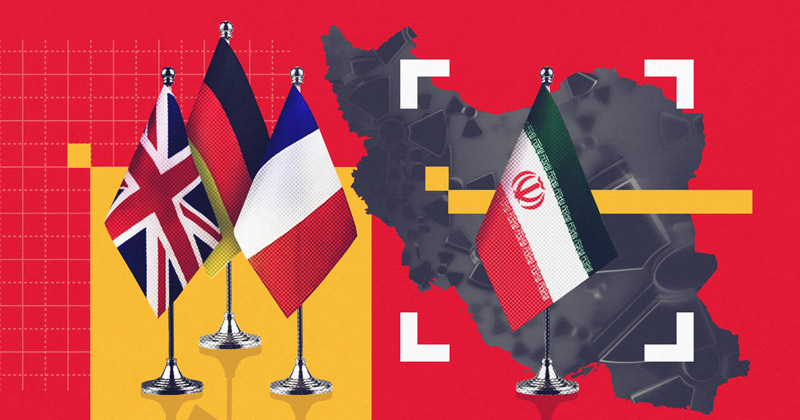
Recently, the activation of the “Snapback Mechanism” against Iran, within the framework of the 2015 nuclear agreement (JCPOA), has become a highly discussed topic globally. Official reports state that this mechanism is set to be activated on Sunday, September 28, 2025, reimposing sanctions that were previously lifted. In this article, we will delve into the legal, political, and economic aspects of this event, particularly its potential impact on Iran’s economy and the cryptocurrency market.
When Will the Snapback Mechanism Be Activated?
The Snapback Mechanism, designed to automatically reinstate sanctions against Iran if it violates the terms of the JCPOA, is scheduled for activation on September 28, 2025. This date is significant because, after the United States withdrew from the JCPOA in 2018, Iran has gradually reduced its commitments under the deal, leading to the current push by Western nations, particularly the U.S., to trigger the mechanism.

If triggered, the Snapback Mechanism will reinstate broad sanctions against Iran without the need for UN Security Council approval. This will likely have a significant impact on Iran’s economy and trade relations. Among the most notable consequences is the restriction on Iran’s oil exports and its access to international financial systems.
These measures could exacerbate the already strained economic situation in Iran, potentially leading to increased social and economic crises. The pressing question is whether these sanctions will only affect Iran, or will they also impact global financial markets, including the cryptocurrency sector and Tether’s price?
Impact of the Snapback Mechanism on the Cryptocurrency Market
For those involved in the cryptocurrency market, one of the key concerns is how the activation of the Snapback Mechanism will influence this market. Since Iran has increasingly turned to cryptocurrencies in recent years as a means of bypassing sanctions, the reimposition of these restrictions could have broad repercussions on both Iran’s cryptocurrency market and the global digital asset space.
Increased Demand for Cryptocurrencies
One of the main effects of these sanctions on the cryptocurrency market will likely be a surge in demand for digital assets like Bitcoin. Due to trade and banking restrictions, many individuals and entities in Iran will seek alternative methods for transferring funds and conducting international transactions. Cryptocurrencies, being decentralized and independent of the global financial system, offer a viable solution to these challenges.
Increased Adoption of Cryptocurrencies in Iran
Given the severe economic pressures and renewed sanctions, Iran may move even more decisively toward adopting and utilizing cryptocurrencies. This could boost the local market, with more Iranians turning to cryptocurrencies like Tether (USDT) instead of holding physical dollars.
Market Volatility
Increased demand for cryptocurrencies due to the reactivation of sanctions could lead to extreme market volatility. If Iran widely adopts cryptocurrencies to circumvent sanctions, it could significantly impact the prices of major cryptocurrencies like Bitcoin and Ethereum. Additional economic pressure could also result in price fluctuations across other digital assets.
Increased Use of Stablecoins
Stablecoins, which are pegged to stable assets like the dollar or gold, may become more widely used during the activation of the Snapback Mechanism. These digital currencies can help preserve asset value against inflation and currency fluctuations, making them an attractive option for those in Iran looking to maintain value amid financial uncertainty.
What Sanctions Are Included in the Snapback Mechanism?
The Snapback Mechanism will reinstate several key sanctions that were in place before the JCPOA:
Oil Sanctions: These target Iran’s oil exports, preventing sales to foreign countries and significantly reducing Iran’s foreign revenue.
Banking and Financial Sanctions: Reinstating sanctions on Iranian banks will block their access to the global financial system (SWIFT), hindering international financial transactions and trade.
Trade Sanctions: These sanctions will limit the import and export of goods, drastically reducing Iran’s international trade.
Personal and Government Sanctions: Iranian officials and state entities may be added to new sanctions lists, increasing pressure on the government.
Conclusion
The activation of the Snapback Mechanism on Sunday, September 28, 2025, will undeniably have severe economic repercussions for Iran. However, one of the most affected areas will be the cryptocurrency market. As more Iranians turn to digital currencies to circumvent sanctions and protect their wealth from inflation, significant changes could occur in how this market operates.
While these changes may temporarily lead to extreme fluctuations in cryptocurrency prices, in the long run, it’s expected that Iran will increasingly rely on this technology as a more sustainable economic and financial solution. Ultimately, this situation may serve as a major test for the global cryptocurrency ecosystem in responding to regional and global challenges.







